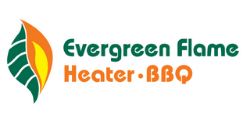Please read these instructions carefully and in full before using.
How to light your Evergreen Flame
Lift up the lid and use self-igniting charcoal to quarter fill across the base, then close the lid.
There are two holes either side of the BBQ – these are the ignition ports.
A long-nozelled gas lighter will fit through one of these holes to light your fuel.
If you do not have self-igniting charcoal, then you can use standard charcoal with fire lighters.
Make sure the fire lighters have fully combusted before cooking, to avoid any unpleasant taste
Make sure you do not over-fill with fuel.
During cooking, if you need to add more heat to your BBQ, use the lifting tool provided to lift the lid (as it will be extremely hot).
You can either re-fill with charcoal up to half way, or sprinkle a handful of wood pellets over the charcoal. There may be some smoke initially. You will soon feel more heat coming through.
To light with wood pellets – insert a cup full of pellets into the BBQ and then either use a piece of firelighter to ignite, or sprinkle a tablespoon of bio-ethenol onto the pellets and ignite.
To light with briquettes or wood – use small sawdust briquettes or break a large one into pieces.
If using wood kindling, this must be dry. Make a pyramid with a piece of firelighter in the middle.
After care
Once you have finished BBQ-ing, you can pour cold water over your BBQ to cool, or immerse the basket in cold water, to cool. Wipe the metal BBQ basket down with a dry cloth. If cooking residue remains on the basket, use a small copper wire brush to remove.
For best results, wipe the top of the lid with a small coating of cooking oil, so it’s ready for next time. The lid can be removed if necessary, using a screwdriver. The lid is dishwasher safe.
Safety warnings
KEEP OUT OF REACH OF CHILDREN AND AWAY FROM PETS
The Evergreen Flame Heater BBQ generates extreme heat. Great care must be taken when using and handling.
Never use indoors or in confined spaces (e.g inside tents). Never place your BBQ on or near anything liable to be damaged by heat.
Carbon Monoxide is produced with all fuels. To avoid Carbon Monoxide Poisoning, never use in poorly ventilated areas, even when extinguished.
